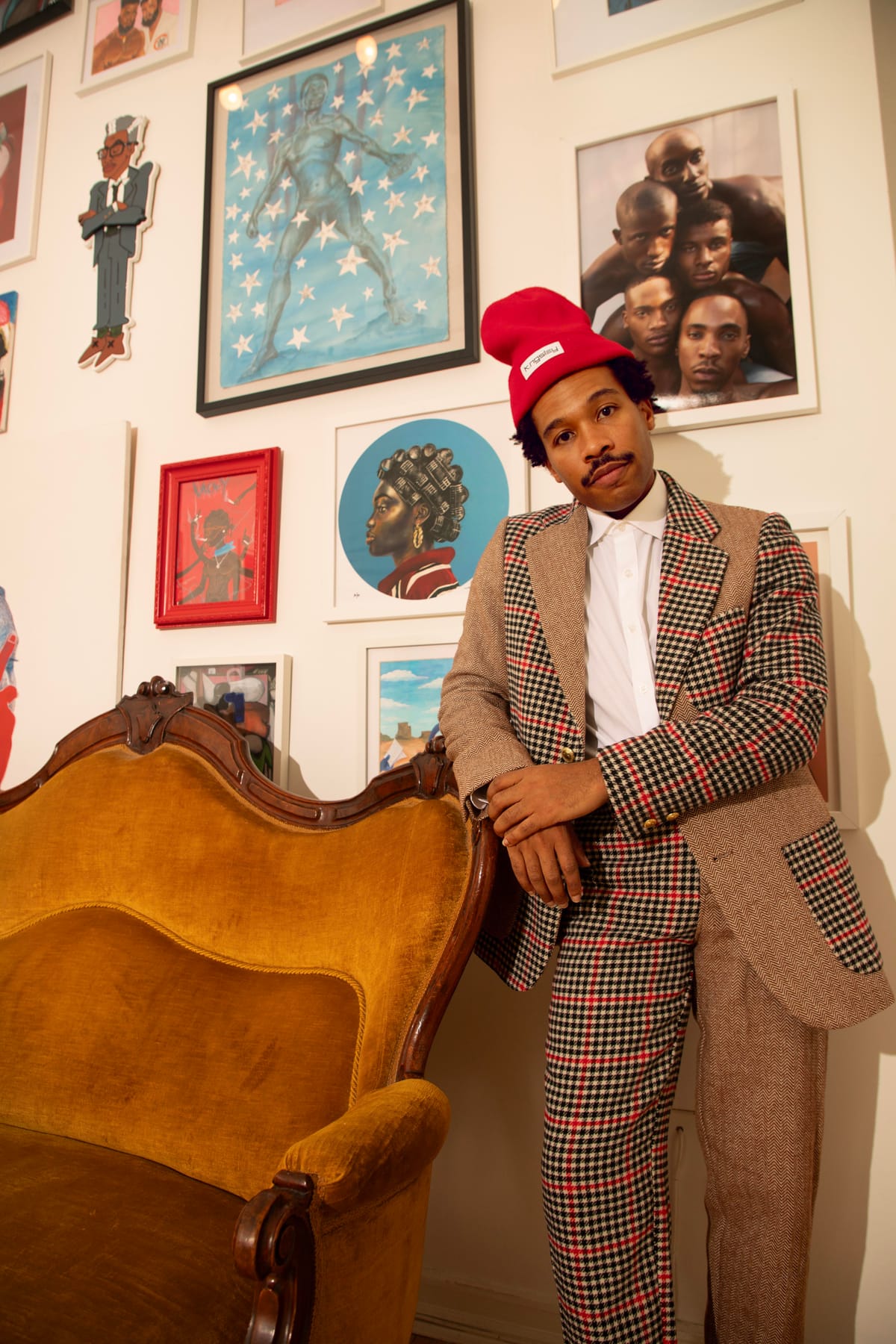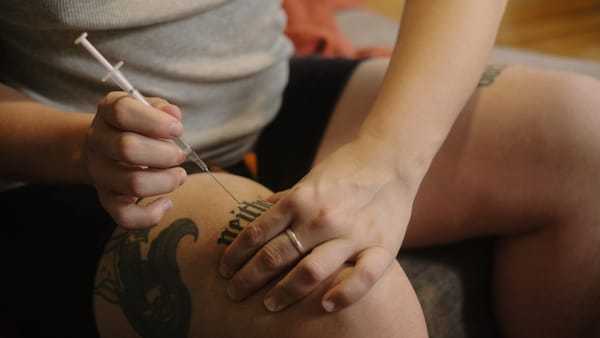Phillip Collins is Preserving Culture, One Black Art Collector At a Time
The founder of Good Black Art on art collecting as a form of activism and the importance of building infrastructure to preserve culture.

Throughout history, art collection and curation have been powerful tools for cultural preservation, enabling societies to document their stories, values, and identities. From the patrons of the Renaissance preserving the legacy of European artistry to the institutions that house cultural treasures, the act of collecting art has always been about safeguarding history. Yet, access to this form of cultural stewardship has often been limited to the elite, leaving many voices—and entire communities—underrepresented or erased.
Phillip Collins, a Black and queer art collector, marketer, entrepreneur, and founder of Good Black Art, is flipping this dynamic on its head. By democratizing the collecting and investing in Black art, his company provides a platform for cultural preservation that is inclusive and accessible. Good Black Art, the first and only tech-enabled company that provides a full-service platform dedicated to art by emerging Black artists, empowers collectors of all backgrounds to engage with and support the next generation of Black artists, ensuring that their stories are celebrated and preserved for future generations.
For Phillip, this work is deeply personal. “I think it’s important to talk about why I started collecting—it was pretty intentional,” Phillip shared. “It was a form of self-love. It was a form of therapy and healing from past trauma, and it was also a form of activism. And those three things were essential for my own survival.”

From Marketing to Masterpieces
Phillip’s background in international marketing initially seemed a world away from the art industry. His work with legacy brands entering emerging markets instilled in him a passion for accessibility—an ethos that now drives Good Black Art. After returning to the U.S. in 2017, Phillip experienced reverse culture shock. “When I moved back to the US, it was very much like the first time living in America as an adult, the first time working in Corporate America, and the first time being out as a Black queer man,” he reflected. Art became his therapy, helping him process the complexities of his identity and experiences.
As he began collecting art with his partner, driven by a desire to see himself represented, Phillip soon realized the structural inequities in the art world. “What is in a museum? What is in an institution? What is deemed worthy of history does not always reflect our experiences,” he explained, referencing research by the Mellon Foundation showing that only 1.2% of artwork in major U.S. museums is created by Black artists. “While we’ve made progress in recent years, we’re also seeing pullbacks. That backlash is real.”
This realization, coupled with his own experiences, inspired Phillip to create Good Black Art. “As I built Good Black Art, I realized there was an opportunity to do this at scale. The scale of what we do is very important because it ensures our stories are preserved and amplified.”

Radical Preservation in a Time of Change
Phillip sees collecting art as a radical act of preservation, especially in an era of book bans and cultural censorship. “Investing in stories is a part of history,” he said. “We’re in a situation right now where certain people’s histories are actively being erased. Books are being banned. Art is being censored.” Through Good Black Art, Phillip is working to ensure that Black stories are preserved and celebrated.
Phillip emphasized the importance of creating independent infrastructures and emphasizes the importance of a dual approach, or what he calls “parallel pathing,” to cultural preservation. “We must always push institutions for equity and fight for a seat at the table, but at the same time, we have to create our own. “We have to make sure that our infrastructure is built, that our stories are owned by us, and that we use our buying power to support our organizations, companies, and communities," he said.

For Phillip, Good Black Art represents a dual effort to transform existing systems and build new ones that empower the Black and LGBTQ+ communities.
“Collecting is a form of activism while creating a space to preserve our stories and build our own infrastructures—our own institutions, galleries, and platforms,” he shared. “We must actively think about how our nieces and nephews, our grandkids, and future generations will view what’s happening in society now. Preservation starts with us.”

Expanding Access and Building an Ecosystem
Last year, Good Black Art ended on a high note, emphasizing integrating art into home environments, prioritizing education over mere buying and selling, and establishing a consolidated platform to enhance accessibility. The company expanded its offerings with programs such as Home Collections, New Arrivals, Artist Spotlights, and limited-edition print collaborations with platforms like Wayfair and Sotheby’s Collector’s Club. Events and exhibitions will remain a cornerstone, alongside features that amplify both collectors and artists.
Looking ahead to 2025, Phillip is focused on broadening the definition of art and what is considered collectible. “By doing so, we aim to cultivate a deeper sense of home that authentically reflects a collector’s lived experience,” he explained. Upcoming strategic partnerships in publishing, sports, film, and travel will expand Good Black Art’s reach while building on the success of past projects like Everyday with the Philadelphia Museum of Art and A New Renaissance – Celebrating Black Innovation at the U.S. Embassy in Paris.

Advice for Aspiring Collectors and Artists
For those interested in collecting art, Phillip recommends starting with self-reflection. “What stories represent you? What do you want to preserve?” he asked. From there, immerse yourself in the art world through Instagram, newsletters, and exhibitions. “The key is to start,” he said. “You’ll learn and grow along the way.”
For artists, Phillip’s advice is universal: “Know yourself, love yourself, and amplify your values through your work. Authenticity is the foundation of success.”
Good Black Art is more than an art business—it’s a testament to the power of cultural preservation, storytelling, and community. As Phillip Collins continues to redefine the art world, his work reminds us that art is not just something to admire—it’s a legacy to protect and a tool to shape the future.





